Dental Intraoral Cameras have revolutionized modern dentistry by offering advanced dental imaging solutions. These small, high-resolution devices take clear images of oral conditions. They help dental professionals improve diagnostics and communication with patients. This makes treatment discussions easier and builds trust with patients.
The global market for intraoral cameras reflects their growing importance. Analysts estimate the market will be worth over $2.10 billion in 2023. They expect it to grow at 12.1% each year until 2030. This growth highlights the critical role of intraoral cameras in improving diagnostic accuracy and patient outcomes.
These devices are no longer optional for dental practices — they streamline workflows and empower better care. At Universadent, we provide innovative, affordable, and reliable solutions tailored to meet the unique needs of modern dental professionals.
Benefits of Using Intraoral Cameras in Dentistry
Intraoral cameras have become essential tools in dentistry, offering dental imaging solutions that enhance diagnostics, improve patient communication, and streamline daily operations. Their versatility and precision make them indispensable in modern practices.
Enhanced Diagnostic Accuracy and Early Detection
Magnified, high-resolution imaging allows dentists to identify intricate details like small cavities, micro-fractures, and gum inflammation. Early detection improves treatment outcomes and reduces the need for invasive procedures. For example, 27% of U.S. adults aged 20 to 64 have untreated tooth decay or cavities. Intraoral cameras can find these issues better than regular exams.
Improved Patient Education and Communication
By providing clear, magnified visuals, intraoral cameras bridge the gap between clinical terminology and patient understanding. Patients can see their oral health directly. This builds trust in their dentist’s treatment plans. It also helps them make informed choices.
Efficient and Effective Dental Appointments
Intraoral cameras streamline chairside imaging, enabling dentists to capture high-quality visuals in real time. This efficiency speeds up diagnostics, reduces appointment durations, and enhances both patient satisfaction and practice productivity.
Reliable and Accessible Dental Records
These devices integrate seamlessly with digital systems, providing consistent, high-quality images for patient records. This not only minimizes manual tasks but also improves collaboration among team members. According to the Journal of the American Dental Association, 70% of dentists using digital imaging tools cite improved clinical efficiency as a key benefit.
Streamlined Treatment Planning
High-resolution visuals from intraoral cameras aid in precise planning for restorations, implants, and orthodontic procedures. Digital imaging also facilitates collaboration among dental team members, enhancing procedural accuracy and minimizing errors.
Monitoring Alignment and Progress
For orthodontic treatments, intraoral cameras are invaluable. Dentists can track alignment changes, ensuring braces or aligners deliver optimal results.
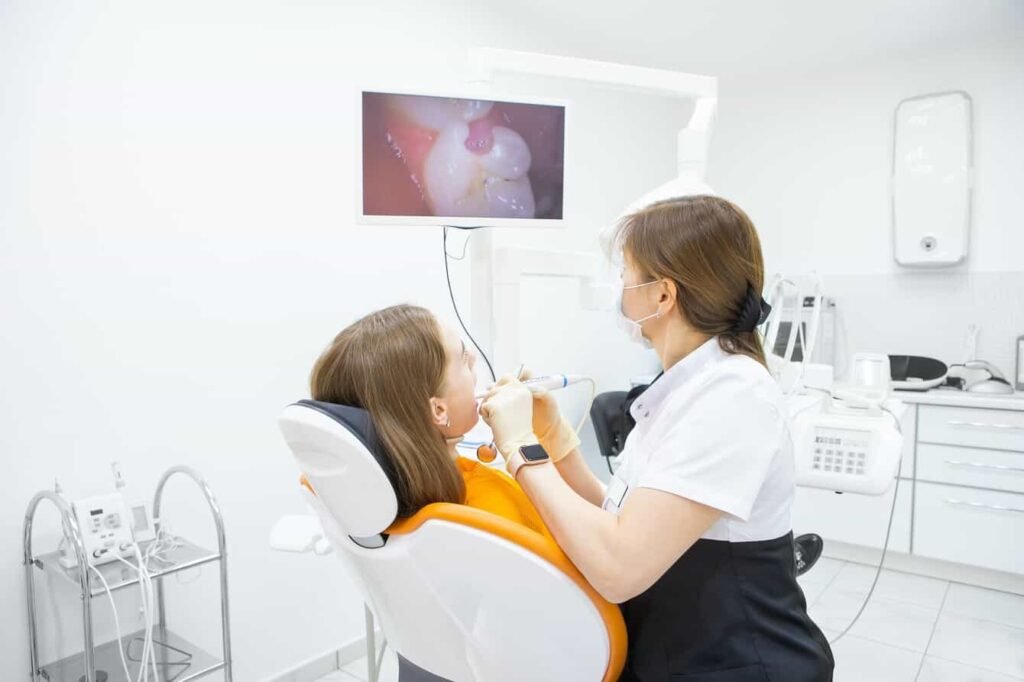
Top 7 Intraoral Cameras for Modern Dental Practices
Choosing the right intraoral camera is vital for improving diagnostics, enhancing patient communication, and streamlining workflows. Below are seven top-rated intraoral cameras, each offering advanced dental imaging solutions tailored to modern dental practices.
Comparison Table: Leading Intraoral Cameras
| Model Name | Manufacturer | Key Features | Best Use Case | Price Range |
| Air Techniques CamX Elara | Air Techniques | Compact, High-Resolution, USB-Ready | Affordable, Versatile Use | $1,000–$1,500 |
| Acteon SoproCARE | Acteon | Fluorescence, Multifunctional Modes | Periodontal and Caries Care | $1,200–$1,500 |
| Digital Doc IRIS LTE USB 2.0 | Digital Doc | Lightweight, HD Imaging, Plug-and-Play Setup | Affordable, Routine Diagnostics | $1,200–$2,000 |
| Sirona SiroCam UAF Plus | Sirona | Advanced Optics, Ergonomic Design | Orthodontics and Education | $1,500–$3,000 |
| Digital Doc IRIS X90 | Digital Doc | HD Imaging, Plug-and-Play Setup | General Diagnostics | $1,500–$4,200 |
| DEXIS DEXcam 4 HD | DEXIS | Seamless Integration, Durable Design | High-Volume Practices | $1,500–$5,000 |
| Air Techniques CamX Triton HD | Air Techniques | Interchangeable Heads, Fluorescence, HD Imaging | Advanced Diagnostics | $3,000–$6,000 |
(Prices are based on industry averages and may vary.)
1. Air Techniques CamX Elara ($1,579.00)
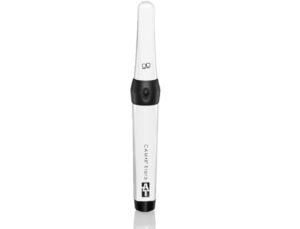
Manufacturer: Air Techniques
The CamX Elara is an affordable, compact option suitable for practices seeking a versatile and user-friendly intraoral camera.
Key Features and Benefits:
- High-Resolution Imaging: Sharp visuals improve diagnostics and communication.
- USB Integration: Simplifies installation and ensures compatibility with most systems.
- Compact and Lightweight Design: Easy to handle during procedures.
Pros:
- Affordable without compromising quality.
- Quick, user-friendly setup.
- Lightweight and portable for flexible use.
Cons:
- Lacks advanced detection tools like fluorescence imaging.
- Limited integration with advanced software systems.
- Basic functionality compared to higher-end models.
2. Acteon SoproCARE ($1,399.00)
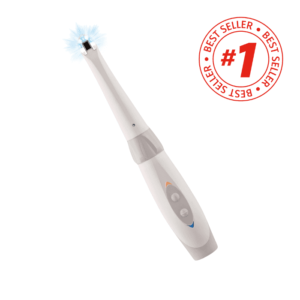
Manufacturer: Acteon
The Acteon SoproCARE combines advanced imaging modes with fluorescence technology, making it highly versatile for diagnostics and patient engagement.
Key Features and Benefits:
- Multifunctional Imaging Modes: Includes CARIO for caries detection, PERIO for periodontal assessment, and DAYLIGHT for standard imaging.
- Fluorescence Technology: Detects plaque, tartar, and early-stage caries. Central fluorescence technology significantly enhances the visualization of caries lesions, particularly early-stage demineralization and active plaque accumulation.
- Ergonomic Design: Lightweight and comfortable for extended use.
Pros:
- Versatile functionality across multiple diagnostic needs.
- Enhances patient understanding with clear visual aids.
- Ergonomic construction minimizes user fatigue.
Cons:
- Requires training to master advanced modes.
- Higher cost per feature compared to single-purpose models.
3. Digital Doc IRIS LTE USB 2.0 ($1,295.00)
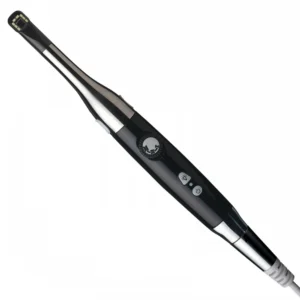
Manufacturer: Digital Doc
Digital Doc IRIS USB 2.0 Intraoral Camera combines lightweight design with high-definition imaging, making it a cost-effective option for general diagnostics.
Key Features and Benefits:
- HD Imaging: Captures crisp visuals for enhanced diagnostics.
- Plug-and-Play USB Setup: Quick installation with USB 2.0 compatibility.
- Lightweight Construction: Comfortable for extended use.
Pros:
- Affordable yet reliable for daily diagnostics.
- Simple to set up and easy to use.
- Durable design suitable for long-term usage.
Cons:
- Limited compatibility with newer USB systems.
- Lacks advanced features like fluorescence or AI tools.
4. Sirona SiroCam UAF Plus ($2,099.00)
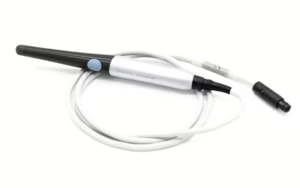
The SiroCam UAF Plus combines ergonomic design and advanced optics, making it an excellent choice for orthodontics and patient education.
Key Features and Benefits:
- Advanced Optics: Provides ultra-clear imaging for detailed assessments and precise treatment planning.
- Ergonomic Design: Lightweight and streamlined to reduce fatigue during long procedures.
- Versatile Applications: Suitable for general dentistry and orthodontics.
Pros:
- Exceptional imaging quality for precise diagnostics.
- Comfortable design for extended use.
- Adaptable for both routine and specialized care.
Cons:
- Lacks fluorescence-based detection.
- Premium pricing may deter smaller practices.
5. Digital Doc IRIS X90 ($2,695.00)
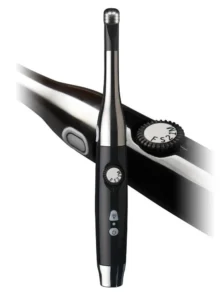
The Digital Doc IRIS X90 offers sharp imaging and effortless usability, making it ideal for general diagnostics in busy dental practices.
Key Features and Benefits:
- High-Definition Imaging: 1080p resolution delivers crystal-clear visuals for accurate diagnostics and improved patient education.
- Plug-and-Play USB Setup: Enables quick installation with minimal technical expertise.
- Advanced Optics: Detects micro-fractures and other subtle oral issues.
Pros:
- Exceptional diagnostic precision.
- Easy setup allows dentists to focus on care rather than technology.
- Durable design supports heavy daily use.
Cons:
- Lacks advanced imaging modes like fluorescence.
- Limited compatibility with newer USB versions.
6. DEXIS DEXcam 4 HD ($1,799.00)
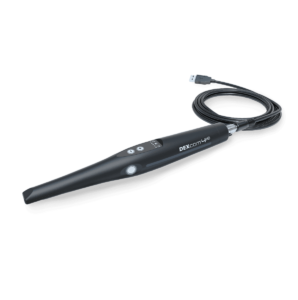
Manufacturer: DEXIS
The DEXcam 4 HD offers seamless software integration and robust imaging capabilities for high-volume practices.
Key Features and Benefits:
- High-Definition Visuals: Sharp, detailed imaging for accurate diagnostics.
- Seamless Software Integration: Works optimally with DEXIS systems to enhance workflow efficiency.
- Durable Build: Stands up to heavy daily usage.
Pros:
- Increases productivity with seamless DEXIS ecosystem compatibility.
- Reliable under demanding usage.
- Exceptional image clarity improves patient care.
Cons:
- Limited compatibility with non-DEXIS software.
- Higher prices compared to less integrated models.
7. Air Techniques CamX Triton HD ($2,999.00)
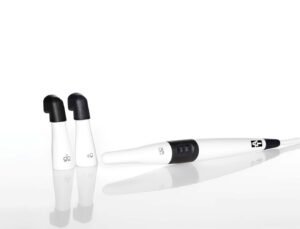
Manufacturer: Air Techniques
The CamX Triton HD combines high-definition imaging with unmatched versatility. Its interchangeable heads make it worthwhile for different diagnostic needs. Advanced fluorescence technology helps detect oral issues early, like plaque, tartar, and cavities.
Key Features and Benefits:
- High-Definition Imaging: Captures real HD visuals for unparalleled diagnostic accuracy.
- Interchangeable Heads: Allows quick transitions between imaging modes for specialized procedures.
- Fluorescence Technology: Highlights plaque and early caries for effective patient education.
- Autofocus Functionality: Delivers instant clarity, eliminating the need for manual adjustments.
Pros:
- Offers exceptional flexibility for diverse diagnostic applications.
- Durable, ergonomic design ensures ease of use in daily practice.
- Advanced imaging tools improve workflow efficiency and patient understanding.
Cons:
- Requires training to utilize interchangeable heads fully.
- Higher initial investment compared to single-purpose cameras.
How to Choose the Right Intraoral Camera
Choosing the right intraoral camera can transform how your practice diagnoses problems, communicates with patients, and maintains efficiency. Here are the key factors to consider.
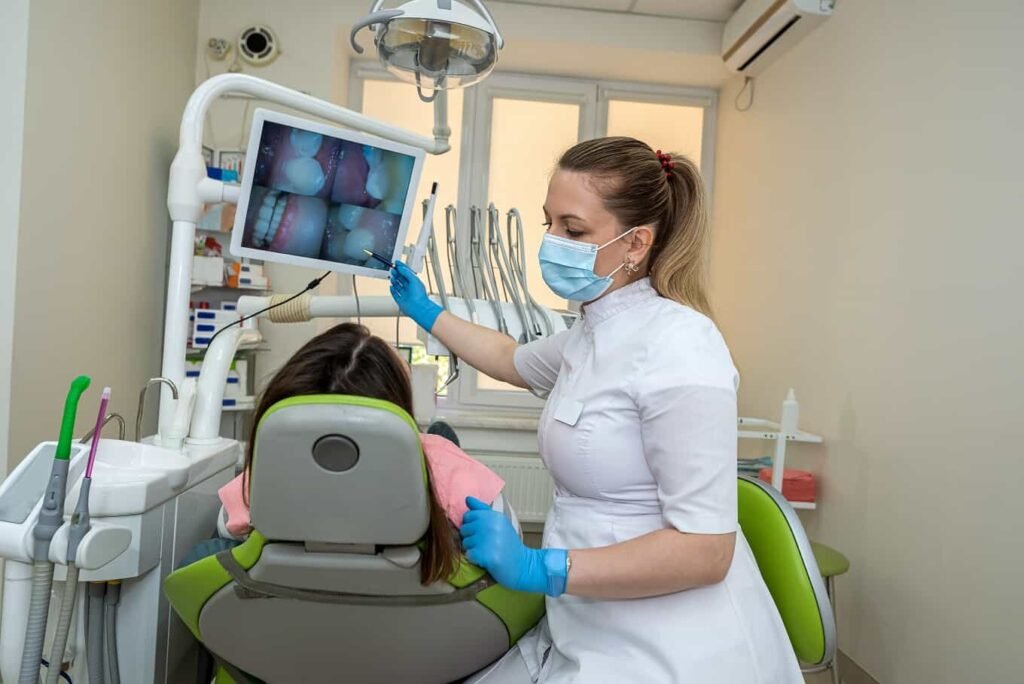
Image Quality
High-resolution imaging is critical for spotting dental issues early and explaining them clearly to patients. Opt for cameras with HD (1080p) resolution or higher to ensure precise visuals. Cameras with lower resolution may miss small but significant issues like cracks or early-stage decay.
Recommended Model: If your practice values high-resolution imaging, consider the Digital Doc IRIS X90. It offers 1080p visuals, which are great for spotting small problems like micro-fractures and early cavities. For a cheaper option, consider the Digital Doc IRIS LTE USB 2.0. It provides reliable HD quality at a lower price.
Software Integration
Seamless integration with your existing systems is essential for efficient workflows. Look for:
- Plug-and-Play USB Connections: Simplifies image transfer to patient records or team sharing.
- Cloud-Based Compatibility: Enables secure image storage and easy access across devices.
Integration with digital systems ensures your dental imaging solutions remain streamlined and effective.
Recommended Model: Practices looking for seamless integration might consider the DEXIS DEXcam 4 HD, especially for advanced workflows. Smaller practices looking for easy solutions can try the Digital Doc IRIS LTE USB 2.0. It has a simple plug-and-play USB setup for quick connections.
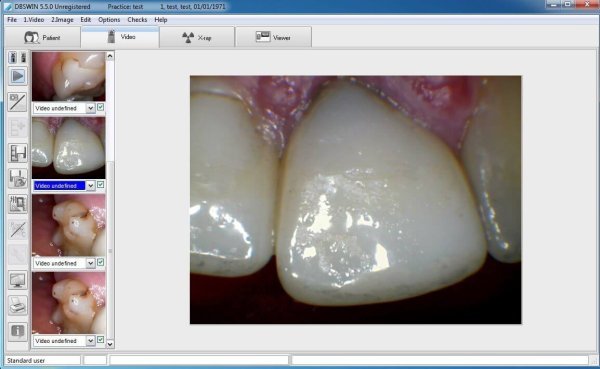
Comfort and Ease of Use
Frequent use demands a camera that is lightweight and ergonomically designed. Features like comfortable grips and intuitive controls reduce strain and make long procedures more manageable for dentists and hygienists.
Recommended Model: The Air Techniques CamX Elara is lightweight and compact. This makes it great for regular use.
The Air Techniques CamX Triton HD is an excellent choice for practices that need flexibility. It has interchangeable heads and an ergonomic design. This balance offers comfort and advanced diagnostic features.
Advanced Features
Modern intraoral cameras come with additional tools that enhance diagnostics and patient care. Consider models with:
- Fluorescence Imaging: Detects plaque, tartar, and cavities early.
- Transillumination Technology: Illuminates cracks and fractures that traditional methods might miss.
- AI Tools: Automatically analyze images to identify decay, alignment issues, or other conditions.
These features can significantly improve diagnostic precision and workflow efficiency.
Recommended Model: The Acteon SoproCARE is an excellent choice if you need advanced imaging tools. It offers fluorescence and multifunctional imaging modes. The Air Techniques CamX Triton HD provides interchangeable heads, fluorescence imaging, and high-definition capabilities to support complex diagnostics for added versatility.
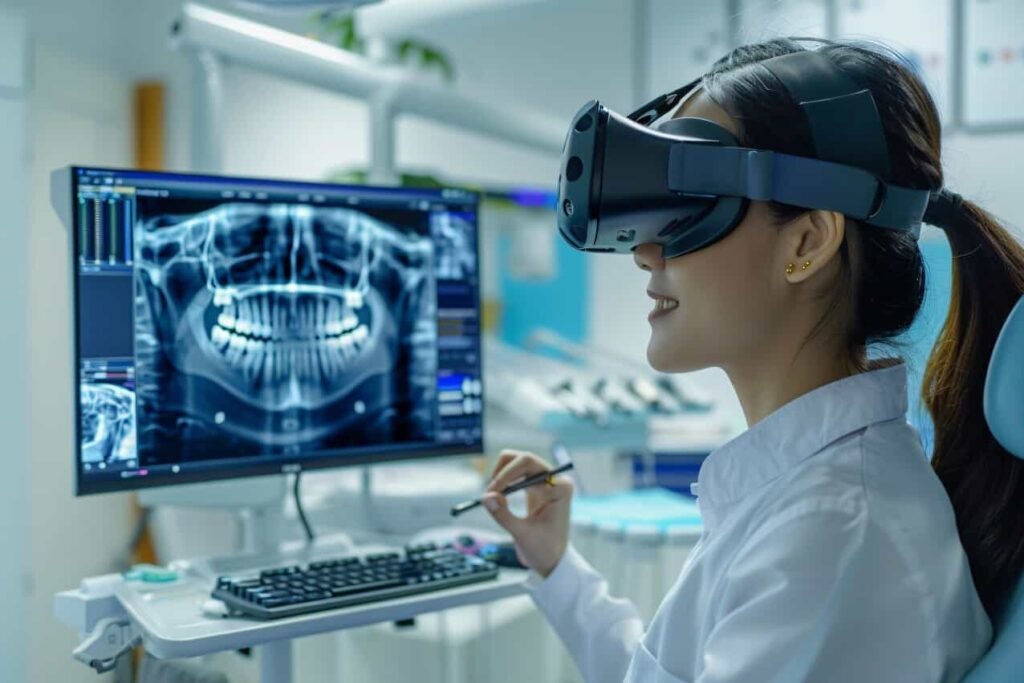
Practice-Specific Needs
Every dental office has unique requirements. Choose a camera that aligns with your focus:
- General Dentistry: Flexible models providing clear visuals for routine care.
- Recommended: Practices focusing on routine diagnostics might benefit from options like the Digital Doc IRIS X90 or the Digital Doc IRIS LTE USB 2.0, both of which deliver precise imaging and ease of use.
- Orthodontics: Cameras that track progress during treatments like braces or aligners.
- Recommended: The Sirona SiroCam UAF Plus is an excellent option for tracking treatment progress. It has advanced optics and is easy to handle.
- Teledentistry: Devices with live-streaming capabilities for virtual consultations.
- Recommended: The Air Techniques CamX Elara offers portability and USB-ready integration for remote consultations. Practices seeking premium imaging with teledentistry capabilities could also explore the Air Techniques CamX Triton HD for advanced diagnostics.
Matching the camera’s features to your practice’s needs ensures you get the most value from your investment.
After-Sales Support
Reliable support and training are as important as the camera itself. For instance, Universadent provides:
- Hands-On Training: Helping your team maximize camera features.
- Technical Support: Quick troubleshooting to minimize downtime.
- Software Updates: Ensuring your camera remains efficient and up to date.
Future Trends in Intraoral Camera Technology
Intraoral cameras are evolving rapidly, introducing new technologies that improve dental diagnostics and patient care. Here are the key trends shaping the future of these essential tools.
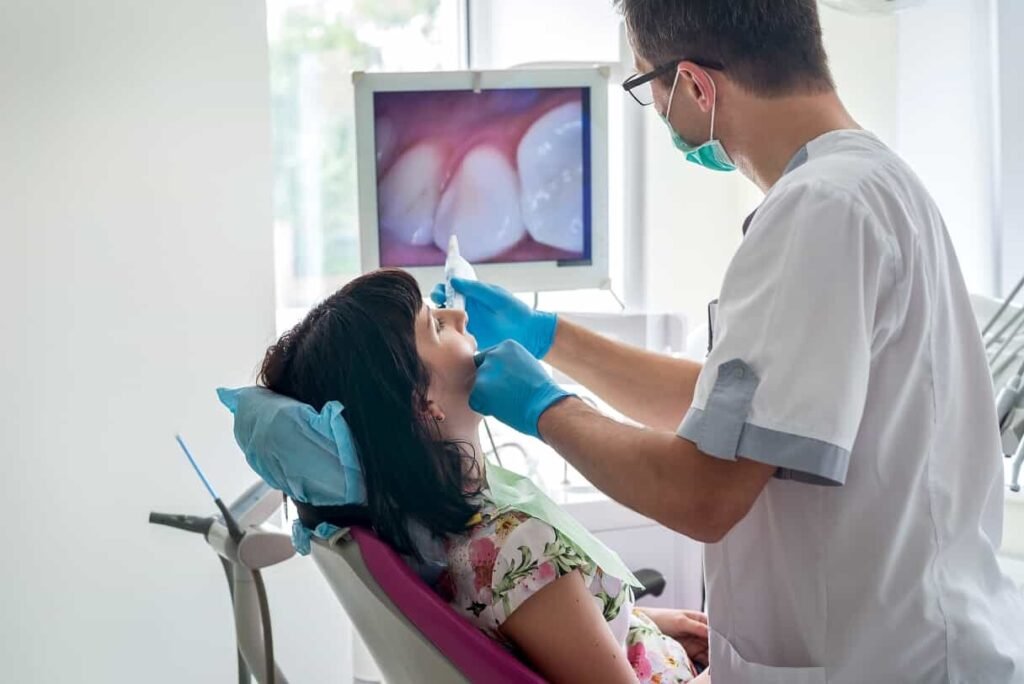
Artificial Intelligence (AI) Integration
AI is transforming intraoral camera work by enabling real-time evaluation of dental images. A report from Dental Tribune says that AI imaging tools help doctors find problems better.
They can spot cavities, cracks, and misalignments more accurately. This improves diagnostic accuracy and keeps patients safer. These innovations reduce the risk of missed diagnoses, streamline treatment planning, and improve patient outcomes.
Enhanced Imaging Capabilities
Advancements in dental imaging solutions, such as 3D imaging and digital impressions, are setting new standards in modern dentistry. These features provide clear images of teeth and gums. This helps dentists give accurate treatments. It also helps patients understand their oral health better.
Teledentistry Integration
With the rise of teledentistry, intraoral cameras with live-streaming capabilities are gaining popularity. These tools enable remote consultations, making dental care more accessible — particularly for patients in underserved areas. By integrating teledentistry-ready cameras, practices can expand their services and provide efficient care from a distance.
Ergonomic and User-Friendly Designs
Modern intraoral cameras are becoming lighter and more ergonomic, ensuring ease of use for dental professionals. Features like easy controls and comfy grips help reduce strain during lengthy procedures. This creates a better experience for both doctors and patients.
Integration with Digital Workflows
Seamless integration with digital systems like electronic health records (EHR) and CAD/CAM systems is becoming a standard feature. This compatibility simplifies image storage, sharing, and retrieval, streamlining workflows and enhancing practice efficiency.
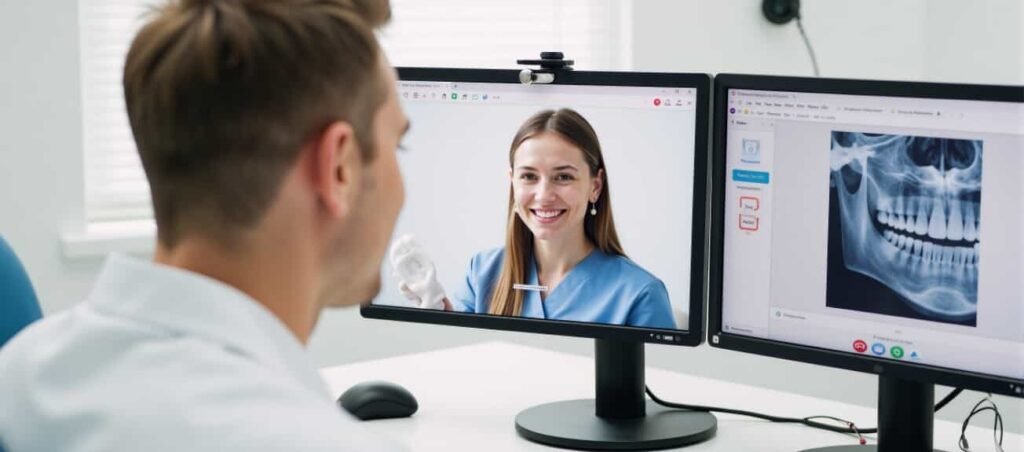
Universadent: Your Partner in Modern Dental Imaging
Intraoral cameras have transformed dental care, making it easier for professionals to diagnose, communicate, and treat patients. These tools have high-resolution imaging, easy software integration, and comfortable designs. They help improve patient care and make practices more efficient.
The future of intraoral cameras is full of exciting possibilities. New advancements in AI diagnostics, 4K imaging, and teledentistry are changing dental tools. These improvements help dental practices stay competitive and provide excellent care.
At Universadent, we understand the evolving needs of modern dental practices. Our range of intraoral cameras is affordable and has advanced features. We offer cutting-edge technology to fit every practice’s needs.
Ready to take your practice to the next level? Explore Universadent’s offerings today and find the perfect intraoral camera to improve patient care and efficiency.
